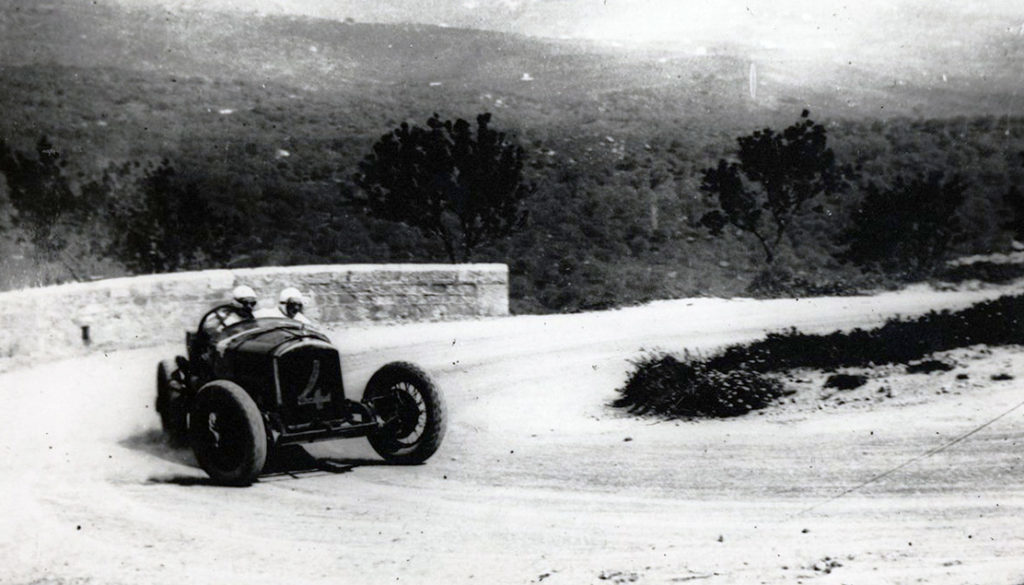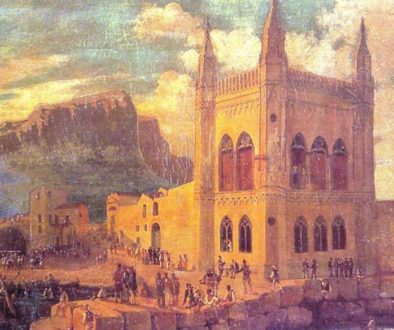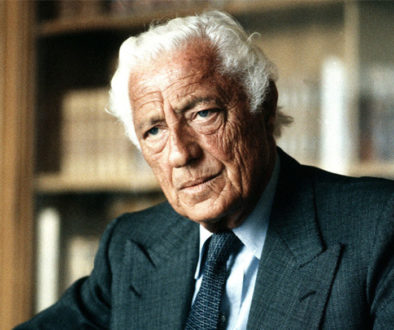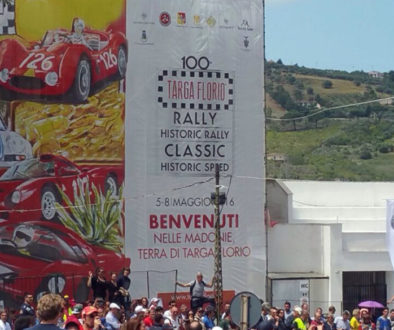X Targa Florio
November 23, 1919 only 100 years ago…
The devastations and grief of the World War (1915-1918) certainly had not interrupted the feelings and passion that have always coursed through sports enthusiasts all over the world. It was the structure itself of the human soul to impose that after any type of trouble everything must pick up exactly where it was left off. In the field of car racing, the various car manufacturers were rather in bad shape and not ready to race, the models were the old ones of 1914, the market was weak and promised nothing good, but it was necessary to go ahead in some manner, to rebuild the images and … try and sell. Races were the ideal tool for advertising, as it was a strong marketing lever recognized everywhere. Denmark, neutral during the war, wished to confirm its neutrality even at peace, by announcing and organizing a race “in less than no time with thirty-eight entries” (Corriere Sera, October 4, 1919) won by Antonio Ascari on a Fiat S57/14 B. This was followed by the famous Coppa della Consuma in Florence on October 26, 1919. again won by Ascari on the Fiat.
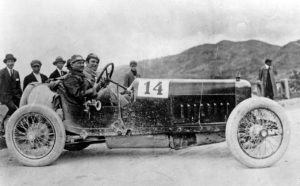
But the first real, great and important post-war international race was the X Targa Florio, which took place on November 23, 1919 on the Medio Circuito delle Madonie (108 km), with four laps. The already notoriously bad road conditions after four years of neglect were disastrous, if not even impracticable in some stretches, as the ones between Collesano and the curve of Petralia Sottana. Despite the cold, intense rain, and even the snow, 24 cars and their drivers entered the race, so much was the fame that it attracted.
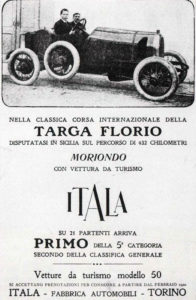
The cars were all of 1914, minus Gallanzi of Milan (Gallanzi) and the C.M.N. (Sivocci, Ferrari) of Pontedera (a company whose workshops, a few years later, were sold to Piaggio, but allowed Sivocci and Ferrari to meet and create the legendary Alfa Romeo). The major car manufacturers were all there: Fiat various models (Ascari, Giulio Masetti, Lopez, Bozzi, Zamiratti)), Nazzaro GP (Negro, Baldoni), Aquila Italiana (Carlo Masetti), Diatto 4DC (Ghia), Alfa Romeo 40/60 HP (Fracassi, Franchini, Campari), Itala 35 HP (Moriondo, Landi), Eric Campbell-Coventry Simplex (Snipe and Scales), Peugeot L25 (Boillot and Reville), Diatto 20/25 HP (Gamboni), Ballot 5L 4900 (Thomas) and Palermo was full of enthusiasts attracted by the great publicity aroused by Vincenzo Florio’s enthusiasm and charisma, and especially by the desire to return to smile and have fun.
Florio had worked miracles reuniting, shortly after the end of the war with a country troubled by new political upheavals, in a region so far from everything and still linked to ancient systems and almost feudal in its nature, the most important manufacturers with the best drivers of the moment. And, of course, journalists and photographers from around the world. But the name Florio was so famous and revered that it opened all the doors.
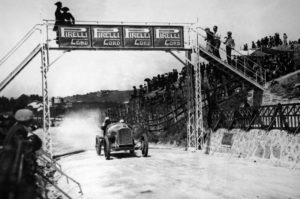
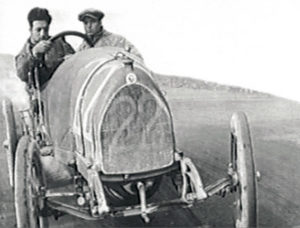
It was an unlucky Targa for the Italian manufacturers, coloured, however, by a series of amenities for the spectators, but strong discomforts for the competitors, even with a comical ending. Sivocci and Ferrari with their respective mechanics came down from Milan (!) and in Abruzzo they ran into not only a violent snowstorm but were even attacked even by a pack of hungry wolves …. but who were not aware who they were dealing with!
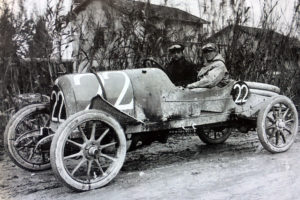
“We left from Milan, Sivocci and I, to reach Sicily with the same C.M.N. cars with which we would race. On the Plateau Cinquemiglia of Abruzzo we found ourselves trapped in a snowstorm. We were chased by wolves, and we began to encounter unexpected risks. With the intervention of the rangers with shotguns and lit torches, and with their shots and those of my revolver, which I always kept under the cushion of my car seat, the wolves were sent away. We arrived in Naples just in time to load our cars on the City of Syracuse, a steamship of Florio’s fleet: a kind of solidarity between poor devils – I think I had no more than 450 lire in my pocket – put the porters at my service, convinced the seafarers to delay the departure and allowed me, Sivocci and other drivers to reach Palermo even if at the price of a night of rough sea and under the assault of bugs” (Enzo Ferrari, Libro Rosso, not available on the market, 1974).
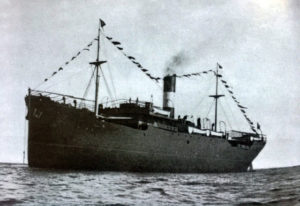
The inclemency of the weather and the pitiful conditions of the road caused many accidents, taking out the most illustrious cars and drivers intimidated by the cold, persecuted by the continuous car failures, blinded by the icy mud that splashed directly from the wheels in their face, certainly repentant in their innermost self but at least consoled by the prizes promised by Florio. They left in 21 and only 9 managed to rank! Already after the first lap, Franchini gave up (and from then on Alfa mounted mudguards also on the racing cars), Ferrari (“it was the first time I felt the presence of death on the racing track” Libro Rosso), Scales and shortly after also Campari (simultaneous explosion of three tires in one curve!) and so on many others. A real carnage, with Boillot’s Peugeot always in the lead, tailed by Thomas with his powerful Ballot who would certainly have won if he hadn’t been betrayed by a broken axle shaft almost at the end of the race. Second overall Antonio Moriondo on the Itala, third Domenico Gamboni on the Diatto and fourth Giulio Masetti on the Fiat.

Almost incredible, but certainly lucky was Boillot’s victory, whose four laps were full of misadventures. He ended up six or seven times off the road, then the first time he passed in front of the stands he was distracted by the enthusiasm of the public and bumped into a fence, but luckily he came out of it without excessive damage; in the race he skidded continuously for all four laps until a few meters from the finish line, where suddenly and inexplicably he pulled the handbrake and caused a disaster.
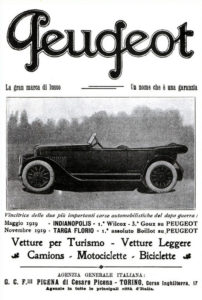
The Peugeot spun a few times and hit an unfortunate imprudent spectator, miraculously avoided other cheering and unsuspecting spectators until it crashed violently into the palisade of the grandstand causing general panic fueled by the screams and the confused Royal Carabinieri who had not understood anything. The sudden and subsequent silence brought everyone back to calm and many did their best to help Boillot to extract the car, also apparently broken, from the wood and wreckage that had covered it. They also tried to help push it by hand to the finish line, but were immediately blocked by the commissioners who, in accordance with the rules, invited the driver to be pushed only by the mechanic and not by others, under penalty of immediate disqualification. The mechanic could barely stand and the poor Boillot, abandoned with his car facing the opposite direction of where he needed to travel, even though “shaken” by fear and fatigue, managed to restart the car and tried to proceed in any case backwards towards the finish line. This worked only a couple of meters, because again the commissioners stopped him admonishing him that the race had to be concluded going forward, otherwise the disqualification would come in effect!
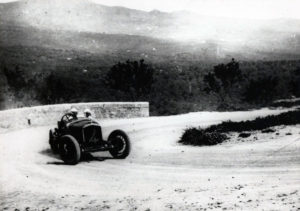
Here was the magic moment that in every event can overturn a destiny apparently already marked.
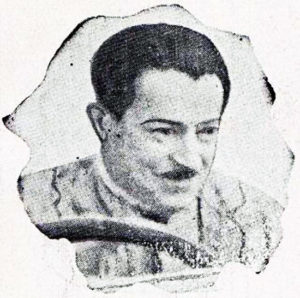
In Floriopoli, Ernest Ballot was also present, manufacturer of the car by the same name, the same car driven off the road by Thomas due to a broken semi-axle, who as a true sportsman approached Boillot suggesting him to go a few hundred meters further back where there was space he could use for reversing his direction. It was so that the lucky Boillot (they even had similar names), true ruler of the race, could go twice over the road that led to the Tribune of Cerda and the finish line of Floriopoli, win the X Targa Florio and finally be extracted from the car almost unconscious. Moriondo, reached the finish lined second after about half an hour, but was the first Italian, was also the protagonist of another funny scene.
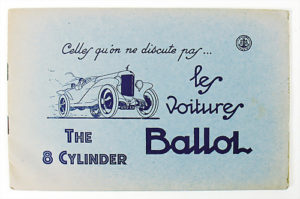
Upon arrival, he was carried off by the festive spectators, but he started screaming like a madman and beating his hands, furiously freeing himself from the grip of the spectators and running up the hill, chased by a stunned carabiniere, and hiding immediately behind trees and shrubs. No fear … he returned after five minutes, smiling and calm. He had not won the Targa, but he had risked of losing the race due to urgent needs barely held back for so long!
The “direct” testimony of Enzo Ferrari is also hilarious and conclusive, which was recorded in full in his very rare 1974 Red Book, which he loved to donate to his friends and guests.
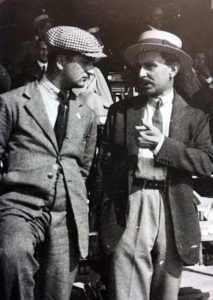
“… I also had various injuries, but in particular, towards the end of the race, in Campofelice, followed by two other competitors, we found three carabinieri in the middle of the road that signaled to us to stop. One never says no to the carabinieri, and so, with deference, we asked the reason for the forced stop: No accident! No danger, the soldiers of the Benemerita answered – you just have to be patient: the President has to finish his speech-…. Shortly after the bend the road was full of people, the street was clogged all the way to the central square of the town: the Sicilians were there to applaud Vittorio Emanuele Orlando, the President of Victory. We protested unnecessarily, … the speech was long … in the end we were only allowed to join the presidential procession … driven for a few kilometers by the imposing black De Dion Bouton … At the arrival timekeepers and spectators had already disappeared with the last train to Palermo. A carabiniere, equipped with an alarm clock, patiently recorded the times of the latecomers, rounding them up to the minute. The following Monday I introduced myself to Don Vincenzo Florio. With his carefree authority he told me: What are you complaining about? You were late, you didn’t risk anything and we even gave you the chance of putting you in the ranking. I was assigned the ninth place; all in all a small success: Don Vincenzo Florio! For me he was a Master of Sports; then he became a friend; now he is still in my memory on the upper floor where the pioneers live.”
Enzo Ferrari was “rewarded” by a magnificent second place overall with the Alfa Romeo 40/60HP the following year, at the XI Targa Florio won by Meregalli on the Nazzaro GP.
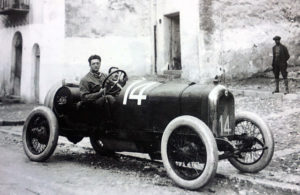
Stefano d’Amico
The images used in this article are for illustrative purposes and belong to their respective owners.
